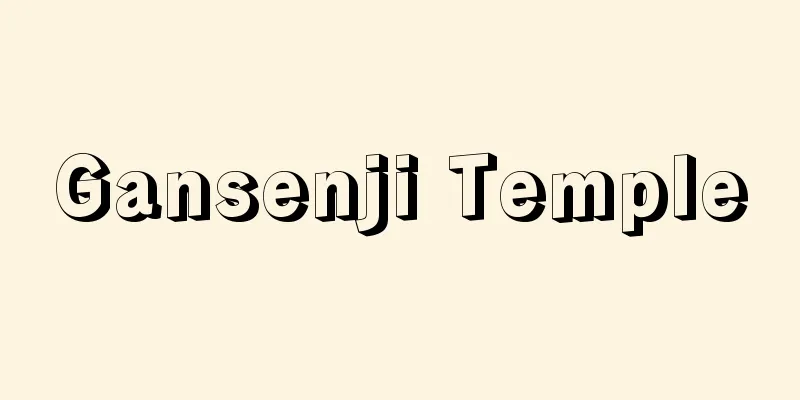Konminto - Konminto

|
In 1883 and 1884 (Meiji 16 and 17), the world economic depression and Matsukata's deflationary policies caused indebted farmers to appear in farming and fishing villages all over the country. At the time, they were called the Konminto, Kakurito, or Binkyoto. The name Konminto can be broadly considered to refer to this group of indebted farmers, but if it was used primarily by farmers, it is now limited to the Chichibu Konminto and Buso Konminto. From 1883 to early 1884, farmers in rice paddy areas demanded reductions in land taxes, rents, and loans, and they were called the Tenant Party, but in 1884, due to the slump in trade in Yokohama and deflation, farmers in raw silk producing areas were deprived of the means to support their livelihoods, fell into debt, and began their own movement to protect their livelihoods. This was the Konminto movement, and therefore the peasant riots that occurred in several places in Gunma Prefecture from November 1983 can also be seen as a Konminto demonstration from today's perspective. Matsukata's finances brought about deflation and an increase in local taxes, but because a modern financial system was not in place, farmers turned to loan sharks and moneylenders for consumer loans, which led to exorbitant interest rates being raised due to supply and demand, resulting in many people being left with nothing but ransom. As a result, the Konminto collectively demanded that creditors postpone their debts and pay no interest, which escalated to the point of murdering a loan shark in the southwest of Sagami (Kanagawa Prefecture). They mobilized the masses in solidarity with several villages, and the movement spread to northern Sagami. On August 10, 1884, a large rally of several thousand people was held at Goten Pass, and more than 200 people were taken to Hachioji Police Station. At this time, members of the Liberal Party mediated between the creditors and the poor. In September, indebted farmers stormed into Hachioji Police Station. In November, they formed the Musashi-Sagami Konminto, and continued to cause riots in various places until 1885. In contrast, the Chichibu Kominto was unique in that its movement style and demands crystallized the causes of peasant unrest across the country, took the Liberal Party's anti-authority stance from a peasant perspective, and even led to armed uprising. In Chichibu, a petition campaign to persuade usurers was launched by the head of each village in November 1883, and continued even as the Kominto's organizational activities progressed from the summer of 1884. A party requires collective organization, and at the stage of creating a mobilization system, about 100 activists from the village were active, drafting the Kominto Covenant, and at the time of the November 1st uprising, they organized the unit into a chief, deputy chief, battalion commander, platoon commander, and even established military discipline. What moved the peasants was a reinterpretation of the Liberal Party Covenant, and the idea of the right to life and social equality based on popular sovereignty. This was the idea that mobilized thousands of peasants not only in Chichibu, but also in Gunma and Nagano, and led them to fight for 10 days against the garrison soldiers, military police, and police forces. [Koji Inoue] [Reference] |Source: Shogakukan Encyclopedia Nipponica About Encyclopedia Nipponica Information | Legend |
|
1883、84年(明治16、17)に、世界経済の不況、松方財政のデフレ政策により全国農漁村に発生した負債農民。当時、困民党、借金党、貧窮党などとよばれた。困民党という名称は、広くいえばこの負債農民集団をさすと考えてもよいが、農民が主体的に使ったものとすれば、現在では秩父(ちちぶ)困民党、武相(ぶそう)困民党に限定されることになる。83年から84年の初期にかけては、地租・小作料・貸し金の軽減が水田地帯の農民の要求で、彼らは小作党とよばれたが、84年になると横浜貿易の不振、デフレのために生糸生産地帯の農民が生活の補助手段を奪われ、負債農民に転落し、生活防衛の自己運動を起こすに至った。これが困民党の運動であり、したがって群馬県で83年11月から数か所に起こった農民騒擾(そうじょう)も、現在からみれば困民党の示威運動と考えることができる。 松方財政はデフレとともに地方税の増徴をもたらしたが、近代的金融制度が整っていないため、農民は消費金融を高利貸営業者、金貸し会社に求めることになり、需給関係から法外な利子率の引上げが行われ、身代(しんだい)限りとなる者が輩出した。このため、困民党は、債主に対して集団的に負債据置き、無利子の要求を突きつけるようになり、相州(神奈川県)南西部では高利貸殺害事件にまで発展した。彼らは数か村の連帯のうえに大衆動員を行い、運動は相州北部に波及。1884年8月10日御殿峠で数千名の大集会を開き、200人以上が八王子警察署に引致(いんち)された。このとき自由党員が債主と困民との仲裁に入った。9月には負債農民が八王子署に乱入する事件も発生。11月武相困民党を結成して85年まで各地で騒擾を繰り返した。 これに対して秩父困民党の特徴は、その運動形態、要求について、全国の農民騒擾事件の要因を結晶させ、自由党の反権力姿勢を農民的に受け止め、極限の武装蜂起(ほうき)までもたらした点にある。秩父でも1883年11月から高利貸説諭の請願運動が各村の惣代(そうだい)の手で行われ、84年夏から困民党の組織運動が進むなかでも続けられた。党という以上、集団の組織性が求められるが、動員体制をつくる段階で村の約100人の活動分子が活動し、困民党盟約を起草し、11月1日蜂起に際しては総理、副総理、大隊長、小隊長などの隊編制をとったうえ、軍律まで定めた。農民の心を動かしたのは自由党盟約の読み替え、人民主権的な生存権や社会的平等主義であり、これが秩父のみでなく、群馬、長野にわたる数千の農民を動員し、10日間鎮台兵、憲兵、警官隊と戦った思想となった。 [井上幸治] [参照項目] |出典 小学館 日本大百科全書(ニッポニカ)日本大百科全書(ニッポニカ)について 情報 | 凡例 |
>>: Kampong Cham (English spelling)
Recommend
Basic Environmental Plan
A basic plan that sets out the outline of environm...
GABA
〘Noun〙 Abbreviation of "gabardine". ※Jiy...
Negoro Group - Negoro Group
〘Noun〙 One of the 100 riflemen. In 1585, the monks...
Magnetizing roasting
The process of roasting ores containing non-magnet...
Nobutsuna Ogo - Ogo no Butsuna
...A local feudal lord based in Ogogo, Seta Count...
Economic White Paper
The Cabinet Office submits an annual report on the...
Yan'an
A city in the center of the Yan'an Basin in no...
Fuji fern - Fuji fern
An evergreen perennial fern of the Acanthaceae fam...
Sannazzaro (English spelling) Iacopo Sannazzaro
1456?-1530 He was one of the leading poets of huma...
Courant d'Italie et d'Armagne (English: Courant d'Italie et d'Armagne)
...However, after the Second World War, thanks to...
Klipspringer - Klipspringer (English spelling)
A mammal of the bovidae family in the order Even-t...
Silver-leafed lily - Silver-leafed lily
...In Japan, deciduous or semi-evergreen shrubs s...
Ezokusaichigo - Ezokusaichigo
... F . iinumae Makino grows in clusters in sligh...
Revolution per minute
…The unit is often the number of rotations per mi...
Gar
〘 noun slang. ① A daughter or wife, as used in the...









